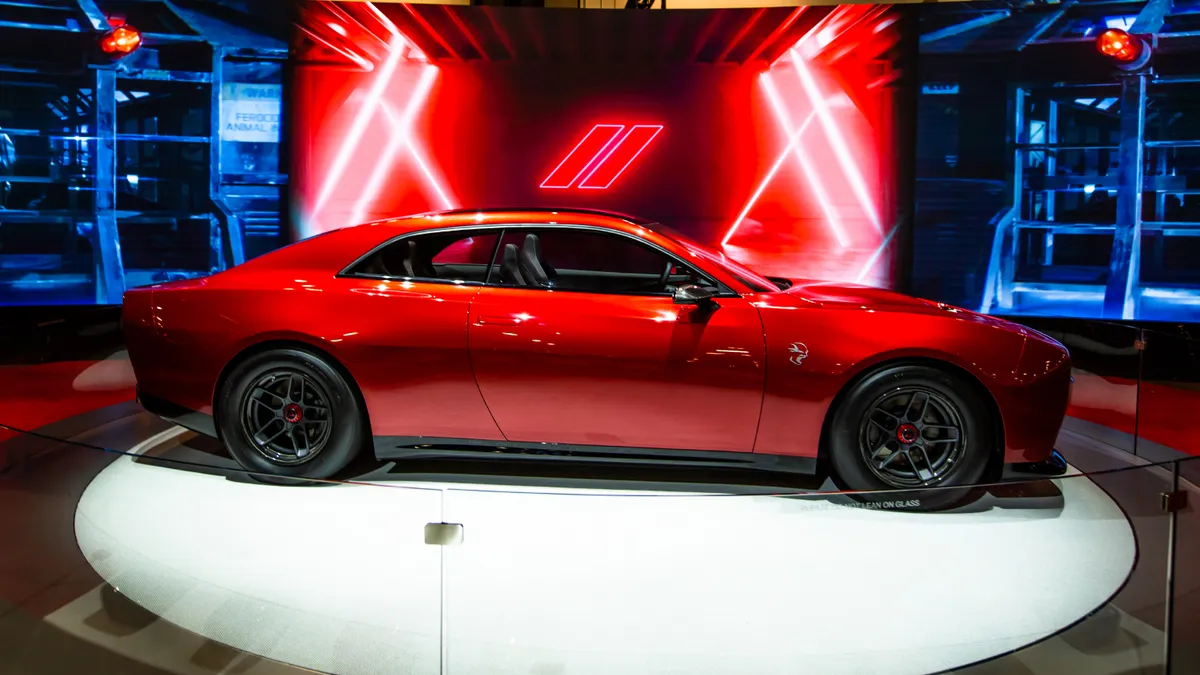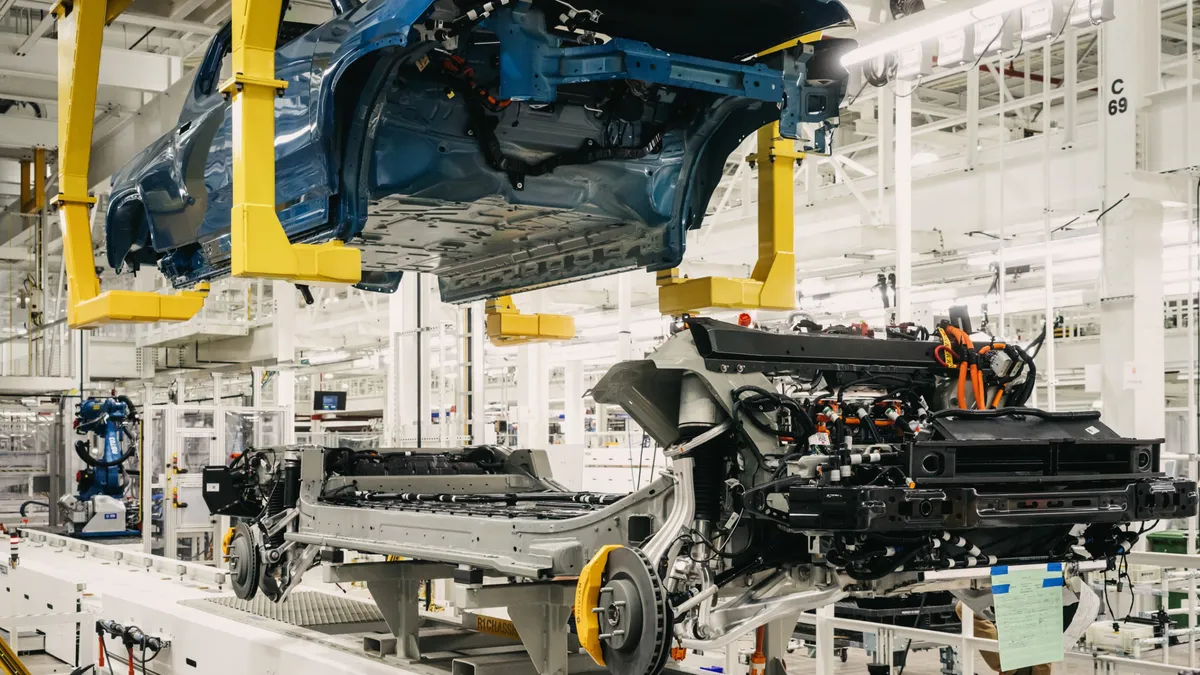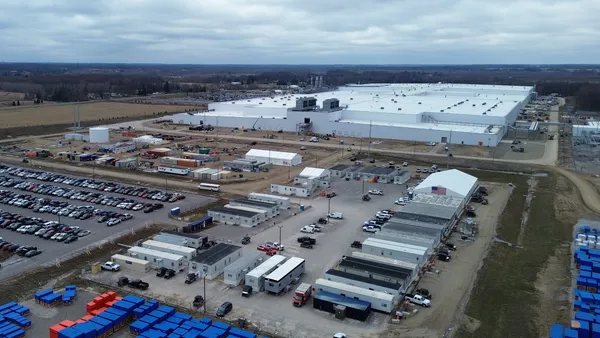Dive Brief:
- Stellantis’ Q3 year-over-year net revenue tumbled 27% to 33 billion euros ($36 billion) from 45.1 billion euros a year earlier, the company reported Oct. 31.
- The company blamed the revenue fall on pricing and foreign exchange impacts and fewer new vehicle shipments as it worked to transition its global production to electric vehicles.
- While newly appointed CFO Doug Ostermann acknowledged disappointment with the automaker’s latest quarterly result during a call with analysts, he noted the company was “grinding through a transition year, which has included a mix of challenging industry dynamics, the temporary impacts of upgrading our product portfolio and significant cost of resolving operational issues.”
Dive Insight:
Stellantis has been retooling its global operations as part of its strategy to ramp up its shift to electrification and achieve net zero carbon emissions by 2038. The transition has led to fewer newer models being built by the company, which has translated to an inventory glut for the automaker.
In the U.S., Stellantis’ Q3 YoY sales fell 20.8% to 301,293 from 380,563, according to Cox Automotive. But Ostermann told analysts the company expected the drop as part of its preparations for upcoming new vehicle launches.
Ostermann said Stellantis’ efforts to reduce its U.S. dealer inventory from 430,000 units at mid-year to 330,000 should be achieved this month thanks to lower pricing on older model vehicles and incentives.
“October is shaping up nicely,” Ostermann said. “We don't have the final figures yet, but we project an approximate 10% increase in unit sales versus September.”
Stellantis’ focus is on EVs and a slate of new vehicles, including low-cost models the automaker already has rolled out in Europe with China-based partner Leapmotor. Ostermann said the company will introduce the vehicles in the Middle East in Q4 and in South America next year.
Ostermann said U.S. launches of the new EVs including the Dodge Charger Daytona and Jeep Wagoneer S also should lift sales as the vehicles are catered toward buyers who are early adopters of the technology.
“We want their experience to be fantastic and we want the word-of-mouth to spread like wildfire that these are fantastic products,” he said.












